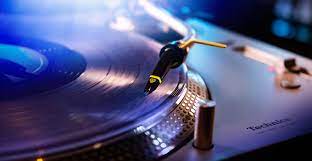Hello!
 Turntables reveal the beauty of a vinyl record. Over the centuries, this good thing has marked a certain spot in those inclined to classical music. This physical media can motivate one to sit back, take time to relax, and listen to a piece of art. It can also be an identified media to help people alleviate stress, maintain focus, and enjoy the moment.
Turntables reveal the beauty of a vinyl record. Over the centuries, this good thing has marked a certain spot in those inclined to classical music. This physical media can motivate one to sit back, take time to relax, and listen to a piece of art. It can also be an identified media to help people alleviate stress, maintain focus, and enjoy the moment.
Talk about its role in society: many people enjoy listening to the resonance from a vinyl record better than just any music file type. Vinyl records also complement the social interaction and its economy, especially with people having a common fondness for such great works of art.
How Turntables Work
But more than just being a music lover, have you ever wondered how vinyl records play and how music goes out as the mechanism of a turntable begins?
As many recognize, the turntable has been around since time immemorial, but it originates back to more than a century. The magic unravels once the needle that rests against the record starts to meet the plastic plate containing a single continuous groove. That needle that tracks the very tiny scribbles of sound waves on the record is called the stylus.
 Turntables from the old times used a needle to imaginatively trace the coiled grooves onto a cylinder, then intensifying the sound.
Turntables from the old times used a needle to imaginatively trace the coiled grooves onto a cylinder, then intensifying the sound.
In today’s age of turntables, when the stylus meets the record, it generates low-frequency rumbles that trigger vibration, causing the amplifier to work and eventually release the perfect sound waves, which every audiophile enjoys.
How Important Is A Stylus
With such functionality, you may presume that the accuracy of the record’s sound is relative to the quality of a turntable. Many who enjoy classic rock, blues, and timeless music prefer an industry-standard turntable to play great-sounding records. But really, the mystery lies in how good the stylus of such a turntable is. Using an old, damaged, and scuffed stylus permanently harms your vinyl record collection. A good stylus such as the Shure M91ED would make a reliable replacement.
 As you may ultimately figure out, vinyl can struggle with its highs and lows.
As you may ultimately figure out, vinyl can struggle with its highs and lows.
Because the stylus digs into the carved grooves on the records as it moves with them, correct adjustments are crucial to making the turntable deliver the best sound quality while preserving the vinyl record from wear and tear and maintaining the record’s complex sounds and improved durability.
Naturally, no one would want ugly crunches of distortion while listening to his record.
Also read:
- 14 Critical Mistakes to Avoid When Planning Your Business Exit
- Why the Non-Farm Payroll is Important To Trade in Forex?
- Top Digital Marketing Trends Your Small Business Should Tap Into
Wrapping Up
Once you learn the tricks, you can enjoy a full accurate listening experience. If you are not that into vinyl music yet, the time will come that you’ll get undeniably attracted to playing them. Because as the real music and equipment enthusiasts would say, nothing sounds as good and as organic as a great record. Thus, audiophiles tend to like the sound of vinyl records better than any other type of music.
Thank you!
Join us on social media!
See you!






